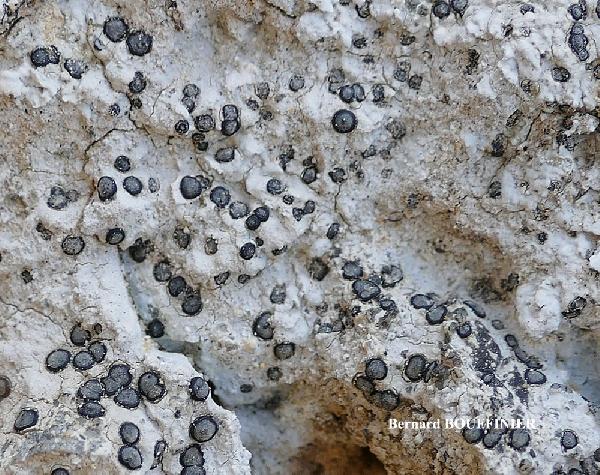Porpidia speirea var. alpina (Hepp ex Arnold) Clauzade & Cl. Roux ex Hafellner & Türk
Stapfia, 76: 155, 2001.. Basionym: Lecidea contigua f. alpina Hepp ex Arnold - Flora, 53: 227, 1870.
Synonyms: Lecidea speirea var. alpina (Hepp ex Arnold) Hertel
Distribution: N - TAA (Arnold 1887, Hertel 1967).
Description: Thallus crustose, episubstratic, continuous to rimose, chalky white, rarely delimited by a thin dark prothallus. Medulla white, I+ blue. Apothecia lecideine, black, (0.2-)0.6-1(-1.2) mm across, long remaining immersed in the thallus, with a pruinose, concave to flat disc (turning convex only in very old apothecia) and a persistent proper margin. Proper exciple, when young, with a broad marginal black layer and a narrow inner colourless layer of radiating hyphae, the latter progressively disappearing, leaving a thin, black-brown exciple reacting K-; epithecium brownish green to green-black, 15-20 µm high, K-, N-; hymenium very pale yellowish green to colourless, 70-105 µm high; paraphyses coherent, branched and anastomosing in upper part, 1.6-2.2 µm thick at mid-level, the apical cell to 3.5 µm wide; hypothecium brown-black, 200-600 µm high. Asci 8-spored, elongate-clavate, with a thin, outer amyloid layer and a thickened tholus penetrated by a pore, the sides of which are strongly amyloid, Porpidia-type. Ascospores 1-celled, hyaline, ellipsoid, 10-21 x 5-9(-11) μm, not halonate, often filled by conspicuous oil droplets. Pycnidia black, immersed. Conidia bacilliform. Photobiont chlorococcoid. Spot tests: cortex and especially medulla K- or K+ pale yellow, C-, KC-, P- or P+ pale yellow, K/UV+ faintly mauve. Chemistry: confluentic acid (major but often in low amounts), 2’-O-methylmicrophillinic and 2’-O-methylperlatolic acids (minor).Note: a rather well-defined taxon, growing on weakly calcifeous rocks near and above treeline, probably more widespread in the Italian Alps, but not always distinguished from var. speirea.
Growth form: Crustose
Substrata: rocks
Photobiont: green algae other than Trentepohlia
Reproductive strategy: mainly sexual
Commonnes-rarity: (info)
Alpine belt: very rare
Subalpine belt: very rare
Oromediterranean belt: absent
Montane belt: absent
Submediterranean belt: absent
Padanian area: absent
Humid submediterranean belt: absent
Humid mediterranean belt: absent
Dry mediterranean belt: absent

Predictive model
Growth form: Crustose
Substrata: rocks
Photobiont: green algae other than Trentepohlia
Reproductive strategy: mainly sexual
Commonnes-rarity: (info)
Alpine belt: very rare
Subalpine belt: very rare
Oromediterranean belt: absent
Montane belt: absent
Submediterranean belt: absent
Padanian area: absent
Humid submediterranean belt: absent
Humid mediterranean belt: absent
Dry mediterranean belt: absent

Predictive model
 DOLICHENS
DOLICHENS


